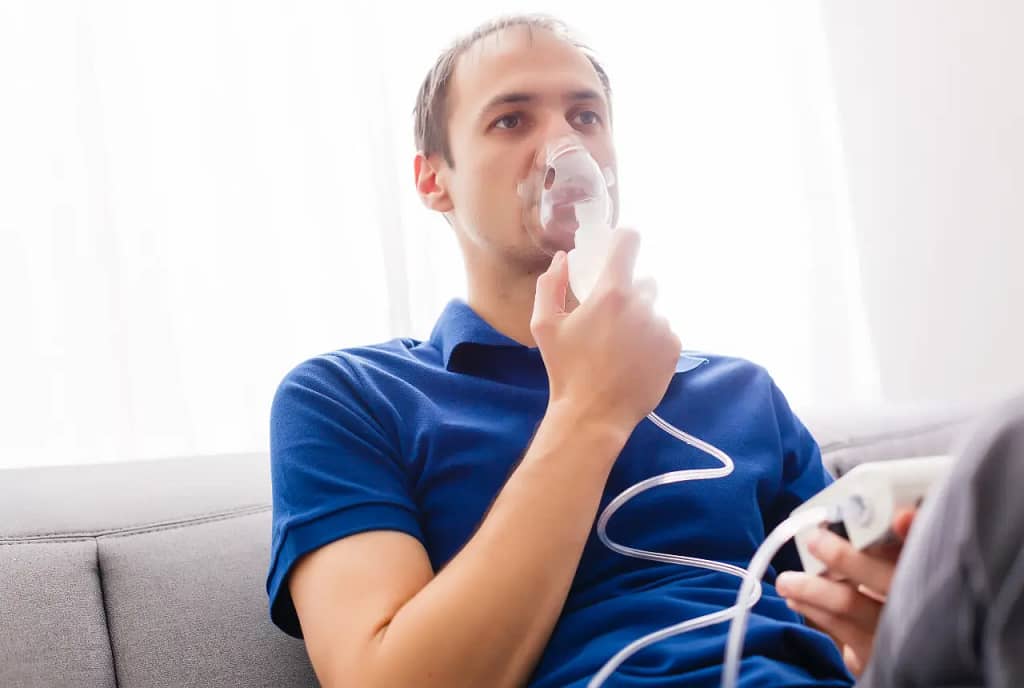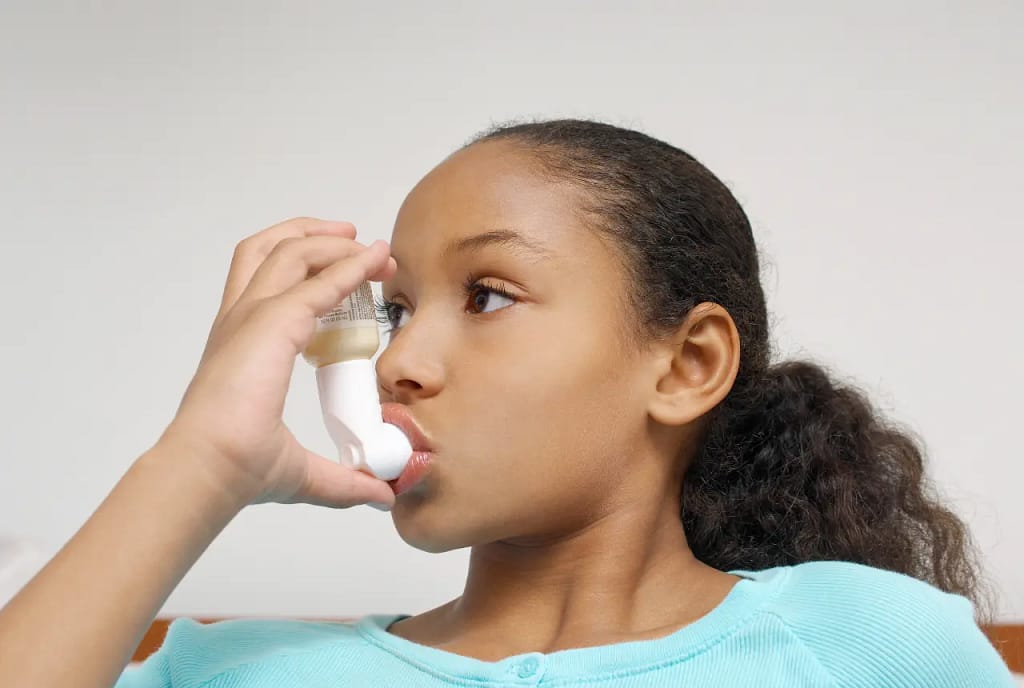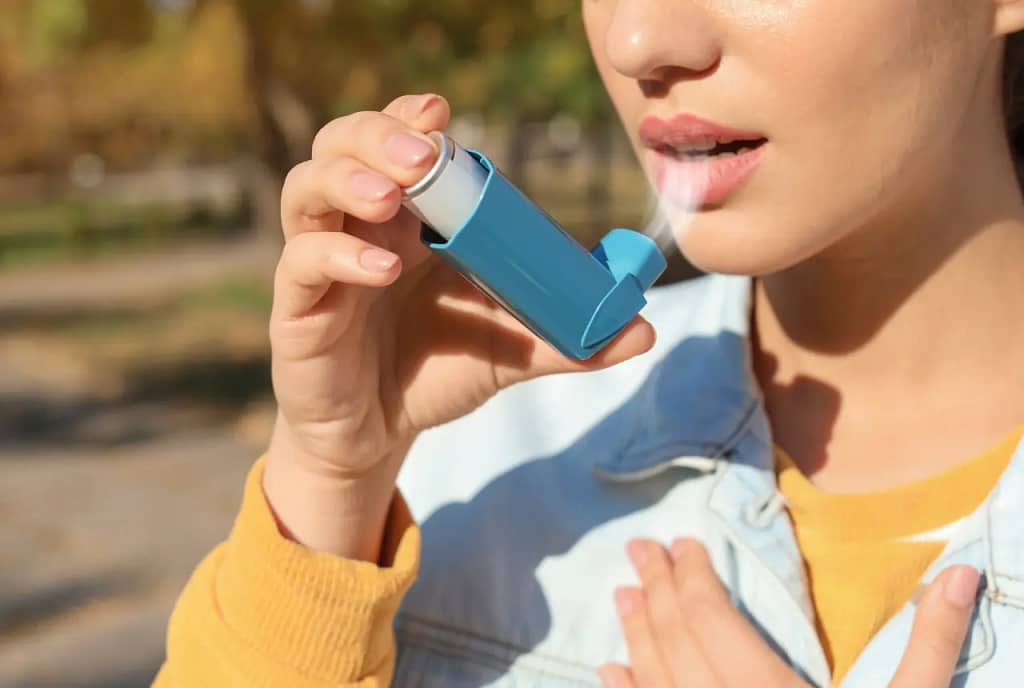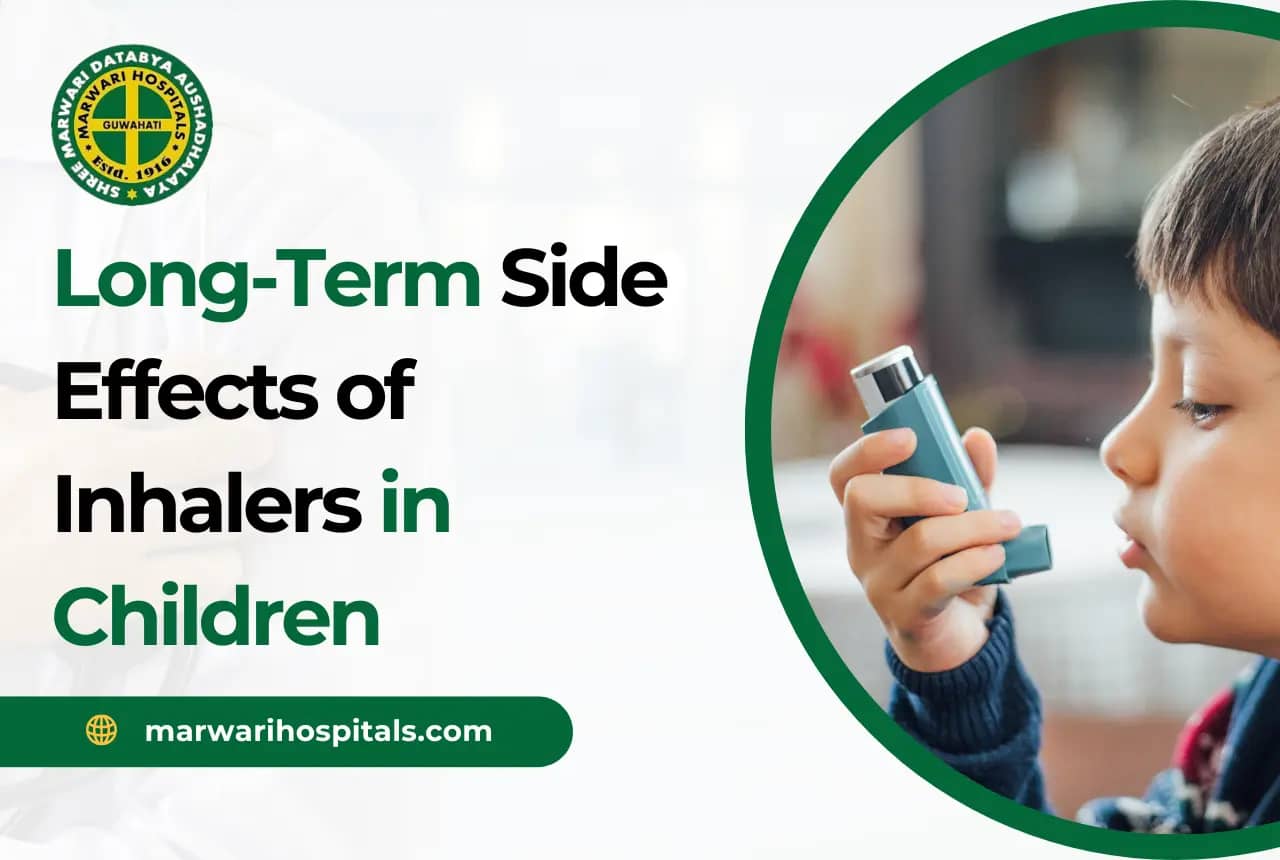Inhaled steroids are the best way to treat asthma that is currently available. These asthma medicines are the best and are used to judge all others. For more than 20 years, they’ve been used a lot all over the world. It’s not the same to take steroids for asthma as it is to abuse steroids to get bigger and stronger. Read this blog to the end to learn about the long-term side effects of inhalers in children and how to minimize them.
When taken as directed, inhaled steroids are usually well-tolerated and safe, even when used for long periods. But, as with all medicines, there may be some side effects. In general, side effects are more likely to happen at bigger doses, but this can be different for each person. You can go back to see your child’s doctor to lower the amount of inhaled steroids they are giving them (if possible). This will make it less likely that a side effect will happen.
Types of Asthma Inhalers

Asthma inhalers are classified into two types:
- Bronchodilators: These immediately relax the airways during an asthma attack, making breathing easier. Salbutamol (albuterol) is a commonly used bronchodilator.
- Inhaled corticosteroids (ICS): These operate by lowering inflammation in the airways, which prevents future asthma attacks. This helps to reduce symptoms and improves overall asthma management.
Possible Long-Term Side Effects of Inhalers in Children

While ICS is generally safe and effective, there is a risk of long-term negative effects, particularly when administered at high doses for lengthy periods. This includes:
- Slower growth: According to research, children who take high-dose ICS have a small drop in adult height. However, this effect is usually minor and is frequently exceeded by the advantages of better asthma management.
- Thrush: This fungal infection can develop in the mouth or throat as a result of pharmaceutical residue. Rinsing properly after using the inhaler can help to prevent this.
- Hoarseness: This could be caused by inflammation in the voice box. Using a spacer device can reduce this danger.
- Growth Suppression: In many cases, the inhaled corticosteroids used by asthmatic children delay or suppress prepubertal growth. Fortunately, this inhaler-induced growth suppression in children is treatable by a specialist.
- Increased heart rate: This is a side effect of some bronchodilators, especially beta-agonists.
- Cough: This can be a side effect of any type of inhaler, but it is more common with bronchodilators.
Rarely, more significant long-term effects of preventer inhalers in children include Adrenal gland suppression and weaker bones are two unusual conditions. However, regular monitoring by a healthcare practitioner is critical for detecting and addressing any potential issues.
Also Read: Wound Care Nursing at Home: 5 Easy Steps to Achieve
Minimising Long-Term Side Effects of Inhalers

Fortunately, there are several strategies to manage and minimize potential side effects of ICS:
- Use the lowest effective dose: Your doctor will determine the appropriate dose based on your child’s specific needs. Regularly monitoring their asthma control allows for dose adjustments if possible.
- Proper inhaler technique: This ensures medication reaches the lungs effectively, minimizing deposition in the mouth and throat, thereby reducing the risk of thrush and hoarseness. Using a spacer device with young children can significantly improve technique.
- Regular checkups: Scheduled appointments with your doctor allow for growth monitoring, assessment of asthma control, and any potential side effects to be identified and addressed promptly.
- Alternative therapies: Depending on your child’s condition, other asthma management strategies, such as allergy control and breathing exercises, can be explored to potentially reduce reliance on high-dose ICS.
- Use of spacers: For young children or those struggling with inhaler technique, consider using a spacer device. This helps deliver the medication more deeply into the lungs and reduces the amount deposited in the mouth.
- Communicate concerns: Discuss any side effects your child experiences with their doctor. They can adjust the medication dosage, and type, or recommend alternative delivery methods if necessary.
It is crucial to remember that the risks associated with uncontrolled asthma, including frequent asthma attacks, missed school days, and potential hospitalizations, often outweigh the potential long-term side effects of ICS used appropriately.
Open communication with your child’s healthcare professional is key to making informed decisions about their asthma management plan. They can address your specific concerns, explain the risks and benefits of various treatment options, and individualize a plan that prioritizes your child’s well-being and optimal asthma control.
Also Read: 8 Best Exercises for Neurological Disorders
Are Inhalers the Only Way to Treat Asthma?

Inhalers are not the only way to treat asthma, however, they are a useful tool for managing symptoms. Here’s the breakdown:
- Inhalers: These devices deliver medication directly to the lungs, providing immediate comfort (bronchodilators) or long-term control (anti-inflammatory drugs).
- Nebulizers: These devices convert liquid medicine into a mist that can be inhaled, which is useful for patients who have difficulty using inhalers or have severe asthma episodes.
- Oral medicines, such as leukotriene modifiers and certain corticosteroids, are commonly used in severe instances in addition to inhalers.
- Lifestyle changes: Identifying and avoiding triggers such as allergies, pollutants, and exercise-induced asthma can considerably alleviate symptoms.
- Breathing techniques, such as pursed-lip breathing and diaphragmatic breathing, can help alleviate symptoms and improve lung function.
Also Read: Chronic Disease Education for Patients: A Comprehensive Guide to Managing Your Condition
Takeaway
Inhalers, particularly ICS, play a critical role in managing childhood asthma, allowing children to breathe easily and live active lives. While potential side effects exist, they can be minimized through proper use, dose optimization, and regular monitoring by a healthcare professional.
By working closely with your doctor, you can make informed decisions about your child’s asthma management plan, ensuring optimal control of their condition while minimizing the long-term side effects in children. Remember, communication, informed decisions, and a focus on quality of life are key to helping your child thrive.

